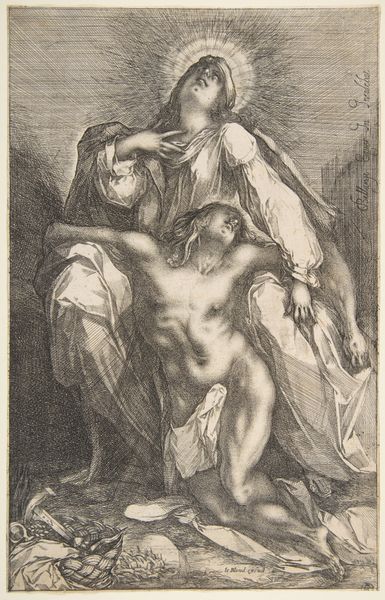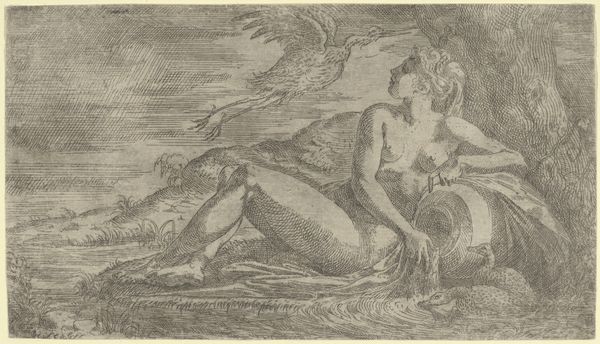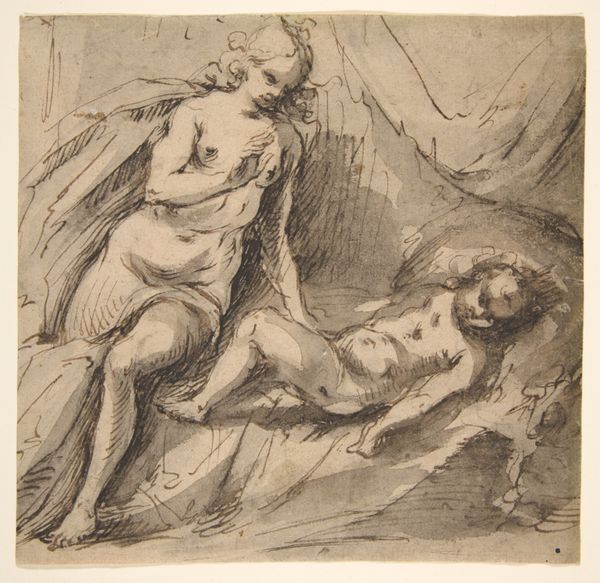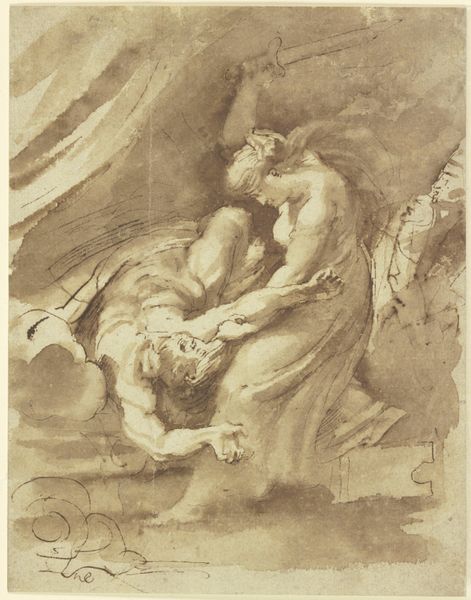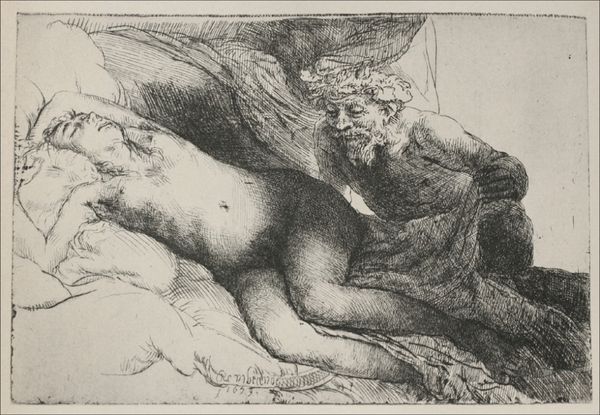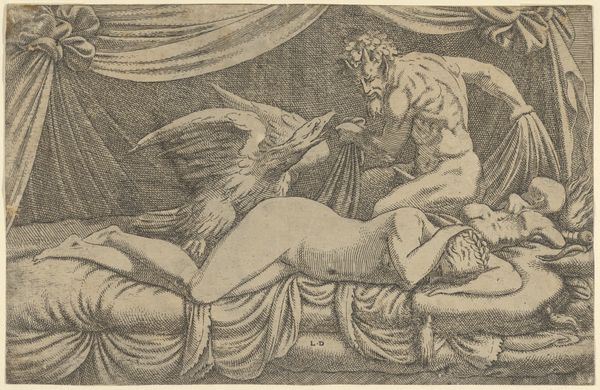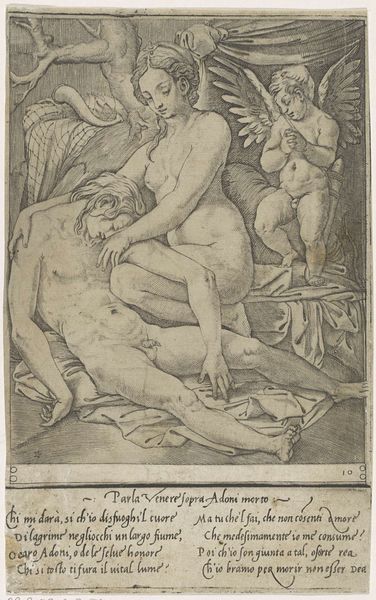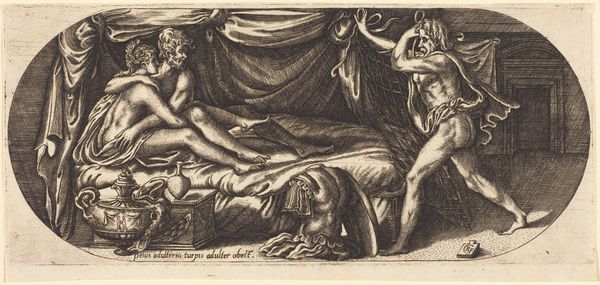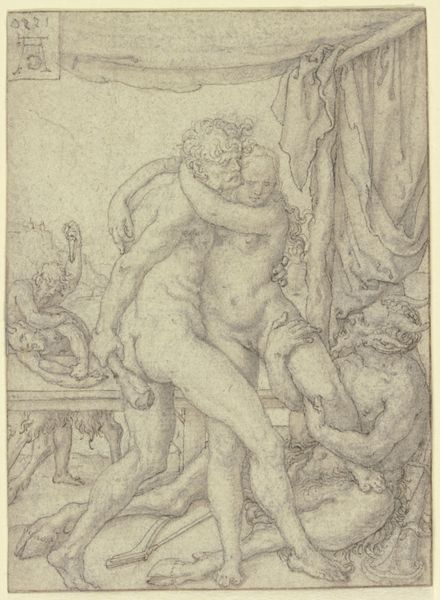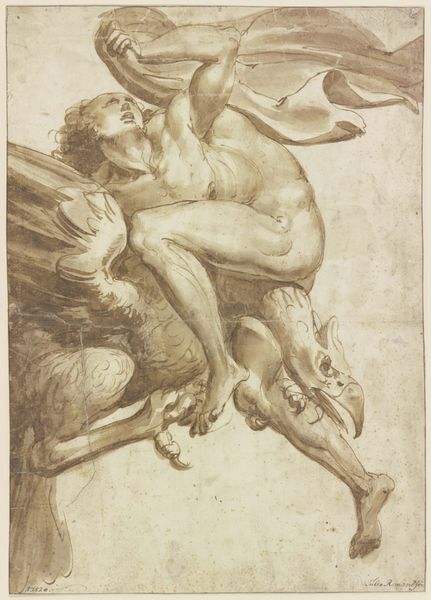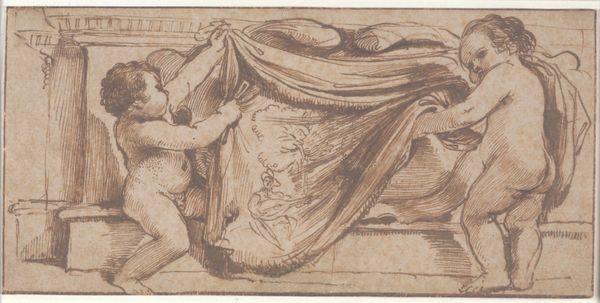
Venus and Mars discovered by Apollo, from "The Loves of the Gods" 1526 - 1536
0:00
0:00
drawing, print, etching, engraving
#
drawing
#
ink drawing
#
allegory
# print
#
etching
#
figuration
#
form
#
11_renaissance
#
line
#
history-painting
#
italian-renaissance
#
nude
#
engraving
Dimensions: sheet: 6 5/16 x 4 5/16 in. (16 x 10.9 cm)
Copyright: Public Domain
Editor: This is "Venus and Mars discovered by Apollo, from 'The Loves of the Gods,'" an engraving by Giulio Bonasone from sometime between 1526 and 1536. I’m struck by the density of the lines; they create so much texture, even though the whole scene feels… scandalous! What stands out to you in this piece? Curator: Immediately, the upper register captures my attention. Apollo arrives, blazing with solar light, drawn by those magnificent horses. Consider the cultural memory embedded here. The horses, of course, represent untamed power, but they're also harnessed – intellect guiding primal energy. The unveiling is not just visual; it's a revelation of hidden desires brought into the light of reason, isn’t it? Editor: I see what you mean. It’s almost like the physical discovery is less important than what it represents. The discovery of a deception, in this case. Curator: Precisely! The symbolism extends. Notice the disarray of the bed, the abandoned objects on the table nearby, perhaps referencing pleasures interrupted. Even the way Venus and Mars are posed conveys specific meanings – Mars caught unawares, almost childlike in his surprise, versus Venus… accepting, perhaps? Are these two passive or active participants in a greater allegorical narrative? Editor: I hadn't considered how much those little details contributed to the whole story. It's more than just figures; it's packed with meaning! Curator: Indeed! These Renaissance prints were meant to instruct and delight. Bonasone provides a rich tapestry of intertwined symbols reflecting the cultural anxieties and ideals of the time. What do you take away from that Italian inscription below? Editor: Right. It names the transgression itself. The god Vulcan’s threat of revenge. He makes the accusation in writing: "I will give you the punishment". Curator: See how all of these clues complete a cautionary image. A complete narrative distilled to its crucial act of discovery, punishment threatened and divine truth revealed. Fascinating. Editor: Definitely! It really shows how symbols can speak volumes across centuries, and how much richer a picture becomes when you know the visual vocabulary.
Comments
No comments
Be the first to comment and join the conversation on the ultimate creative platform.
